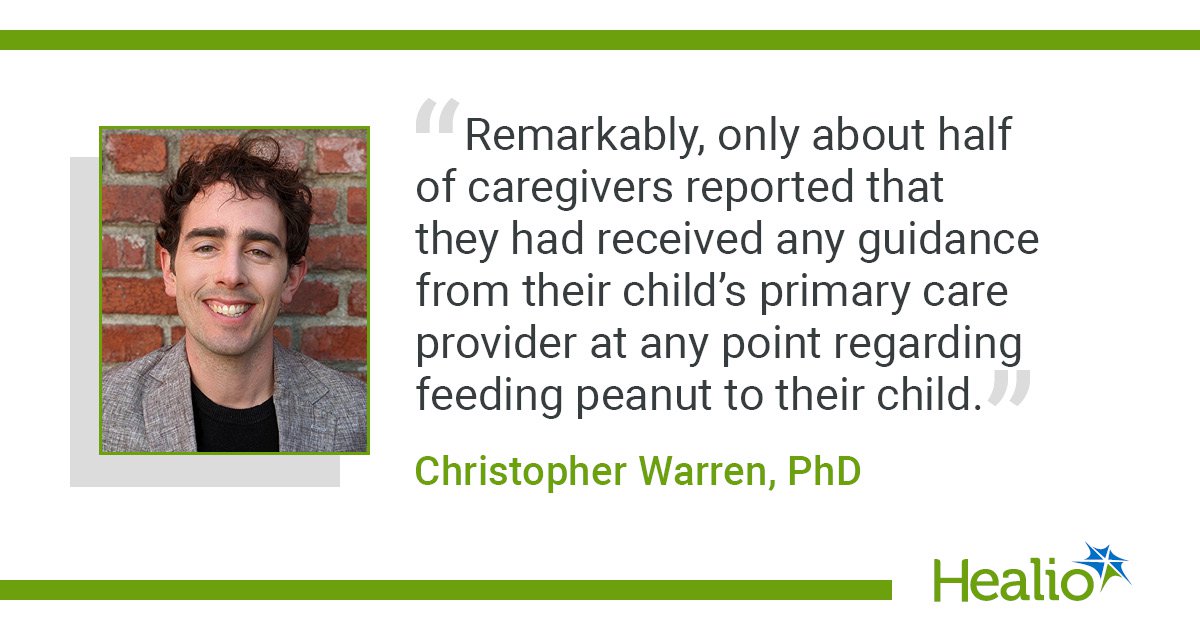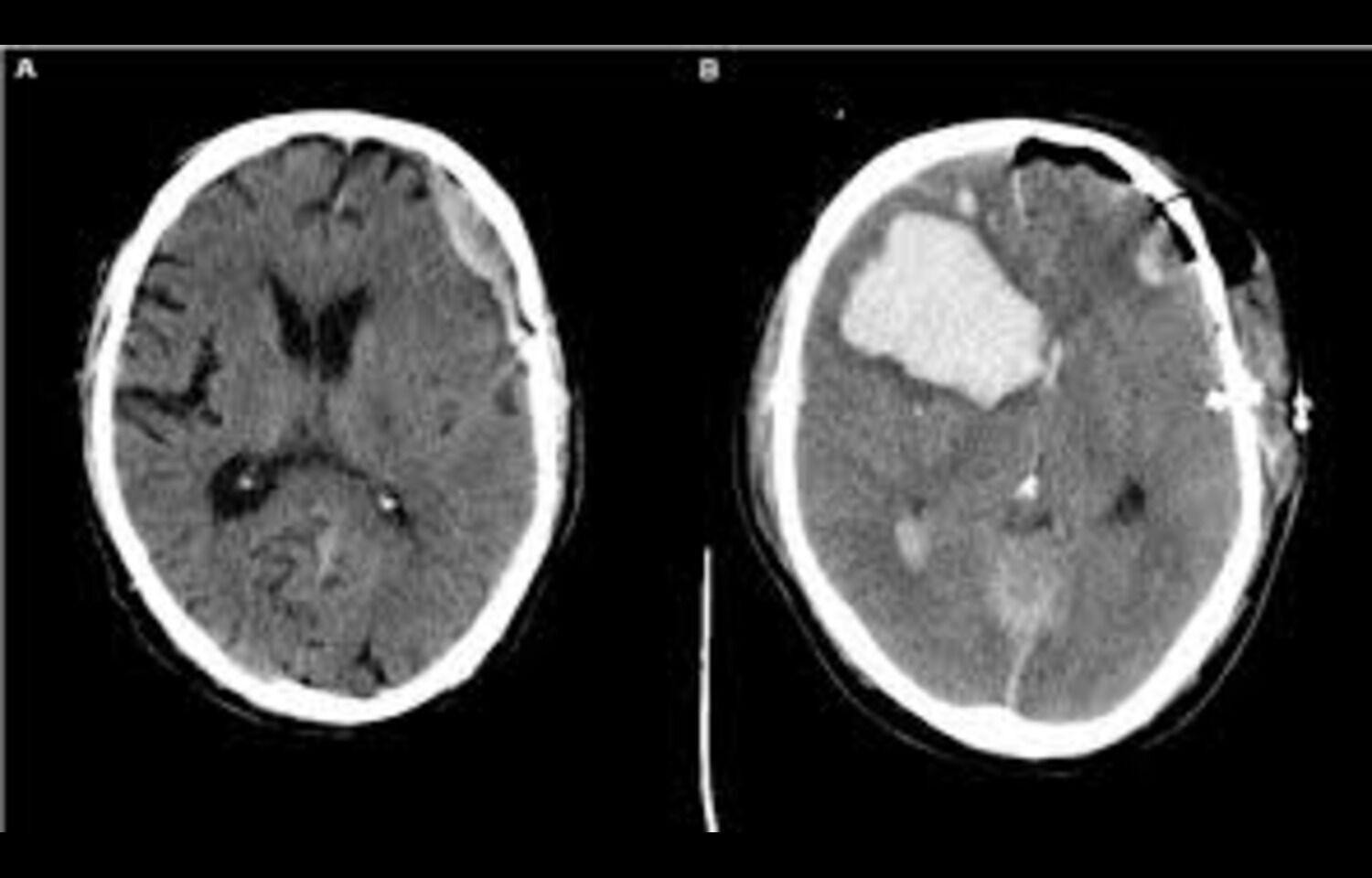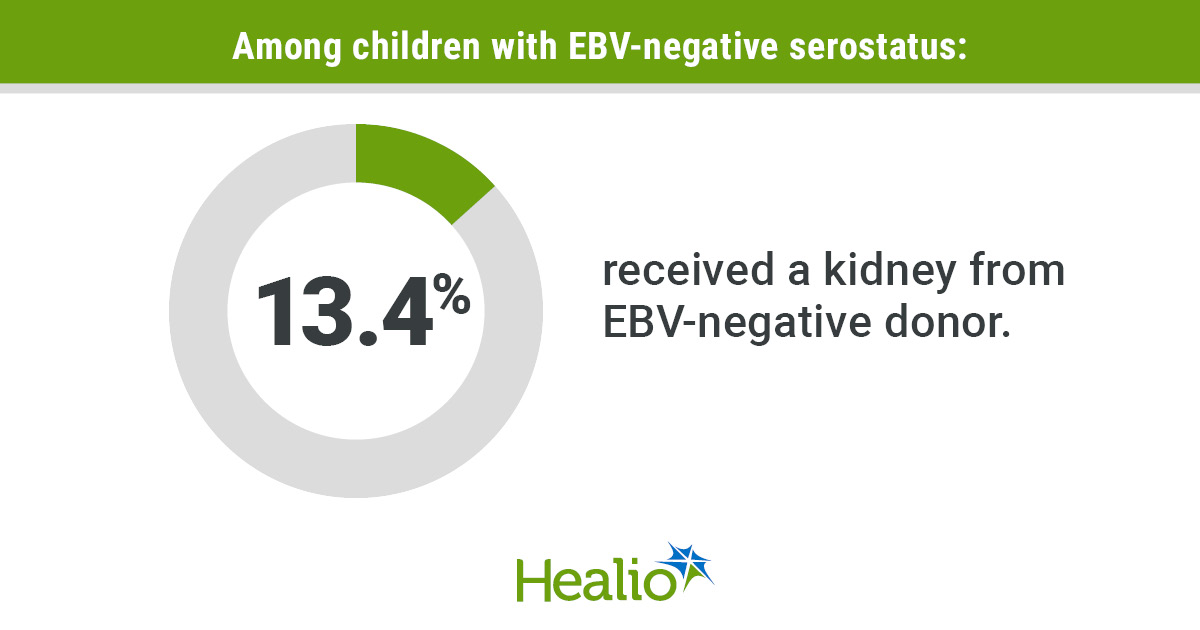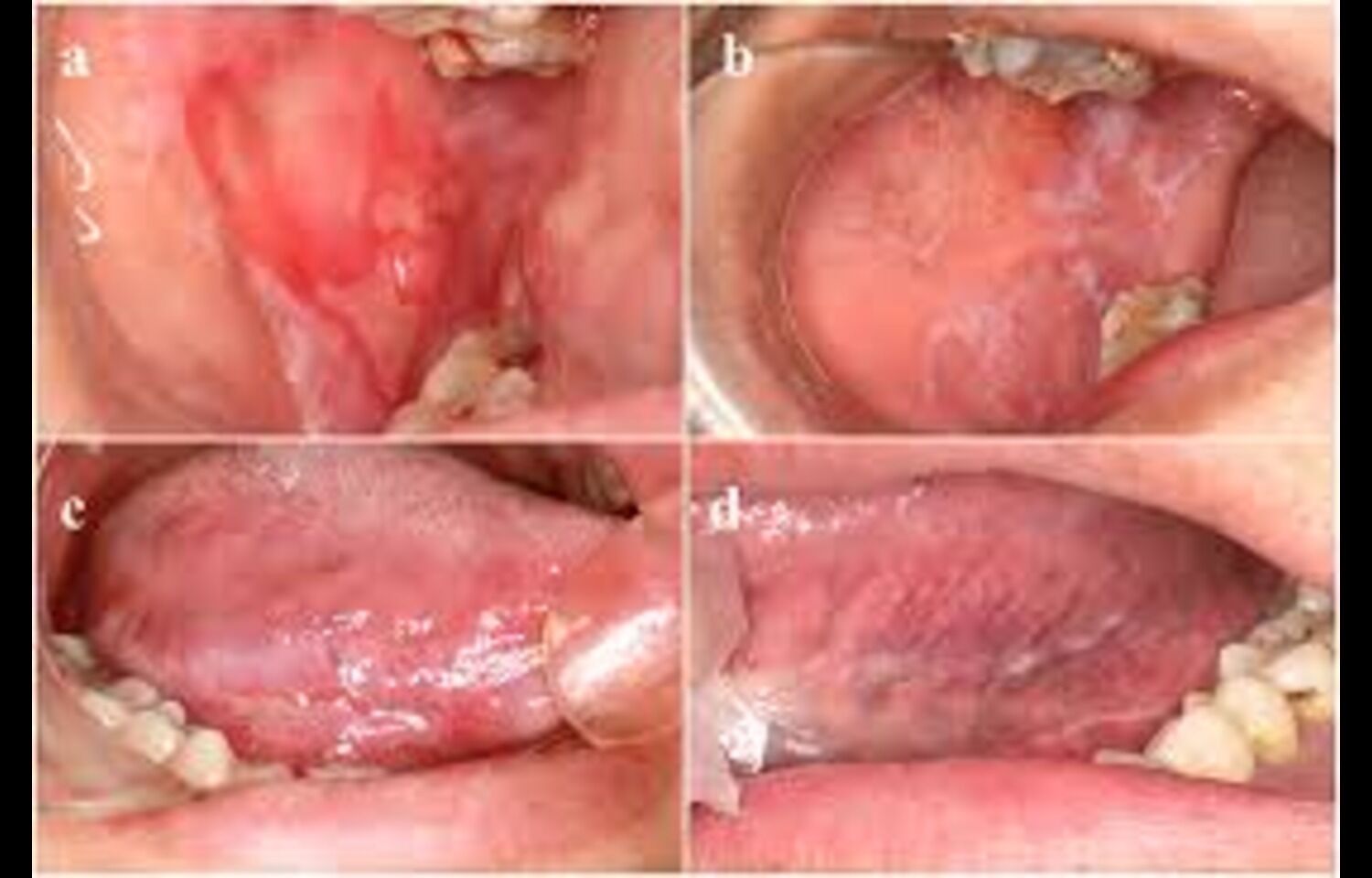August 11, 2025
6 min read
Key takeaways:
- Many providers still do not advise early introduction of peanut.
- There were racial, ethnic and socioeconomic differences in patient education.
- Educational materials may help providers better counsel patients.
Black and Hispanic families, as well as families with lower incomes and less educational attainment, introduce peanuts into their infants’ diets at lower rates than other families, according to data published in Academic Pediatrics.
For example, 51% of white families, 42% of Black families and 36% of Hispanic families introduced their infants to peanut by age 1 year.

These differences correspond with patient education, the researchers said, with 63.5% of white families, 48.2% of Black families and 53.2% of Hispanic families reporting that their primary care provider discussed peanut introduction with them.
We spoke with Christoper Warren, PhD, director of population health research, Center for Food Allergy & Asthma Research, Feinberg School of Medicine, to find out how these disparities may impact peanut allergy prevention.
Healio: What prompted this study?
Warren: Numerous randomized trials, most famously the LEAP study, have found early introduction of peanuts into the infant diet to be protective against subsequent development of peanut allergy during early childhood.
In fact, a recent reanalysis of randomized trial data suggests that well over half of pediatric peanut allergy cases could be prevented through early introduction of peanut and that these prevention effects are at least as strong, if not stronger, when implemented in infants of non-white ethnicity, infants with eczema, and infants who are already sensitized (but not allergic) to peanut, when compared with those of white ethnicity, infants without eczema or infants who are not already sensitized to peanut.
Unfortunately, while new infant guidelines were published in 2017 advocating for introduction of peanut-containing foods into the diet of infants at elevated risk for peanut allergy beginning around age 4 to 6 months, this marked a substantial shift from prior guidance, which recommended delay of peanut introduction until age 3 years.
Therefore, we were interested in understanding what current infant feeding practices U.S. caregivers are implementing regarding peanut-containing foods, and what (if anything) they are being advised regarding the role of dietary exposure to peanut by their child’s PCP.
Consequently, we systematically surveyed a nationally representative sample of over 3,000 U.S. households via web and telephone, in English and Spanish, with children who were born since the publication of those 2017 guidelines for the prevention of peanut allergy.
Healio: Were there any particularly surprising or significant findings you would like to spotlight?
Warren: This study found substantial racial, ethnic and socioeconomic differences in the specific guidance received by parents/caregivers of U.S. children relating to feeding peanut-containing foods in infancy. This is important because national data suggest that children from families experiencing lower socioeconomic status, and particularly those from specific racial/ethnic minority backgrounds, bear disproportionate burden of food allergy in the U.S., in terms of both its prevalence as well as its severity.
These national survey data suggest that non-Hispanic Black children, as well as children from lower income households and households where parents report lower levels of educational attainment, are less likely to receive accurate guidance from their PCP regarding how peanut protein can be introduced during infancy to prevent peanut allergy. Updated guidelines were published in 2017, so it is surprising the degree to which their apparent implementation remains inequitable, particularly given the demonstrated safety and efficacy of these recommended approaches to infant feeding.
We also found substantial, comparable demographic differences in the reported amount of peanut protein fed in the first month of its dietary introduction, in addition to differences in caregiver knowledge and attitudes regarding perceived safety and effectiveness of early peanut introduction for prevention of peanut allergy as well as caregiver self-efficacy when first introducing peanut.
Each of these findings highlight key content areas where further educational intervention can potentially mitigate these apparent inequities in current peanut allergy prevention practices.
Healio: What makes these findings surprising or significant?
Warren: There are many factors that may contribute to our observations of inconsistent, sometimes outdated advice being offered by many pediatric PCPs regarding peanut introduction, even years after publication of updated guidance.
Firstly, the mean age of practicing pediatricians in the United States is around 50 years old, which means that many pediatricians (and their counterparts in allied health and other pediatric specialties) completed their medical training at a time when food allergies were not yet acknowledged to pose a major public health threat.
If older PCPs are not staying up to speed on more recent developments in food allergy epidemiology, diagnosis and prevention, this is one possible explanation for the subset of PCPs who offered outdated advice to delay peanut feeding until age 3 years — the guidance previously offered on the 2000 American Academy of Pediatrics (AAP) guidelines.
More recent clinical data also suggest that PCPs remain uncertain regarding the value of other aspects of the AAP guidelines, namely the recommendation to refer “high-risk” infants for further allergist testing prior to recommending peanut feeding, as this has failed to demonstrate cost-effectiveness under various plausible scenarios.
Given the full medical reversal that occurred from the 2000 guidelines, whose strict recommendation to delay peanut introduction until 3 years stand diametrically opposed to the present recommendations to recommend feeding peanut early and often in the first year of life, it is perhaps unsurprising that uptake of the 2017 AAP guidelines remains suboptimal, given the relatively rapid advances that have occurred in the field across the past 15 years.
Anecdotally, there are also concerns that remain regarding the perceived compatibility of breastfeeding with “early” dietary introduction of peanut and other commonly allergenic solids. Moving forward, it is crucial that public health education efforts more effectively reconcile messaging around the demonstrated benefits of breastfeeding throughout the first year of life with the proven benefits of early introduction of particular allergenic solids, as early as age 4 to 6 months, for primary prevention of peanut and other common food allergies.
Healio: At the practice level, what can providers do to mitigate these disparities?
Warren: This is an extremely important issue, as PCPs play an essential role in implementing these guidelines, given their time-sensitive nature.
Firstly, we need to make sure that the providers who care for underserved communities are equipped with the knowledge and materials to support implementation of this guidance. This can occur via integration of clinical decision support tools such as our iREACH tool into the electronic medical record platforms used by many clinicians, so that clinicians can be efficiently prompted to address peanut allergy prevention in a timely fashion during relevant well-child visits.
Handouts and other materials clearly showing families how to incorporate peanut protein into their infant’s diet in a safe, developmentally appropriate, affordable manner should also be linguistically and culturally tailored so that they resonate with and are trusted by members of underserved communities.
Unfortunately, there remain numerous barriers to implementing current guidance, starting with a lack of awareness among caregivers. Remarkably, only about half of caregivers reported that they had received any guidance from their child’s PCP at any point regarding feeding peanut to their child.
We know that parents and PCPs have limited time together during well-child and other office visits, and there are many other topics that compete with peanut allergy prevention for time. For this reason, it is essential that both parents/caregivers and PCPs are armed with high quality information and simple, effective guidance regarding the safety and efficacy of early peanut introduction for primary prevention of peanut allergy, as well as the resources to implement these evidence-based early feeding practices at home in a way that does not cause undue concern about potentially triggering a latent peanut allergy.
Healio: At the policy level, what can be done to mitigate these disparities?
Warren: On the policy front, efforts are being made to incorporate peanut-containing products into the foods provided by the Special Supplemental Nutrition Program for Women, Infants and Children — or WIC — to infants, which could help increase the availability of peanut-containing products in low-income households and therefore improve the feasibility of guideline implementation.
Approximately 40% of U.S. infants are insured via Medicaid, highlighting the potential importance of state Medicaid programs as a potential route for educational efforts targeting providers and patients who can benefit from such approaches.
Given the rapid rate of scientific progress in this area, policymakers must also continue to evaluate emerging data that can provide further guidance regarding the optimal timing, frequency, dose and/or format of peanut introduction to maximize the public health benefits of these practices.
Healio: What is the next step in this research?
Warren: There are many ongoing “next steps” to this research. First, we are on the verge of publishing the results of a large randomized controlled trial (RCT) aiming to assess and improve PCP adherence to these 2017 NIAID-sponsored Addendum Guidelines for the Prevention of Peanut Allergy via a clinical decision support tool that is embedded into the EMR systems of participating clinicians.
We plan for the resources developed over the course of this project to be made publicly available to any interested PCP or health system so that they can benefit from the evidence-based, RCT-tested solutions developed by our team.
We are also in the midst of implementing a large food allergy prevention trial that aims to determine whether numerous food allergies can be prevented via early introduction of eight common allergenic foods, starting as early as age 4 months. The results of this study, the first of its kind to be implemented in the U.S., will provide much-needed guidance regarding the feasibility and efficacy of early introduction of many commonly allergenic foods for the prevention of food allergy and related childhood conditions.
Finally, we are working with CDC’s National Center for Chronic Disease Prevention and Health Promotion and our colleagues at Food Allergy Research & Education to improve public health surveillance and education around key topics in food allergy, including early dietary approaches to food allergy prevention, to help ensure their equitable implementation.
Reference:
For more information:
Christopher Warren, PhD, can be reached at christopher.warren@northwestern.edu.









